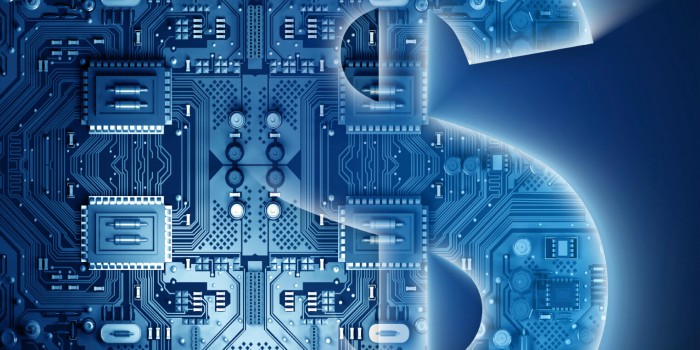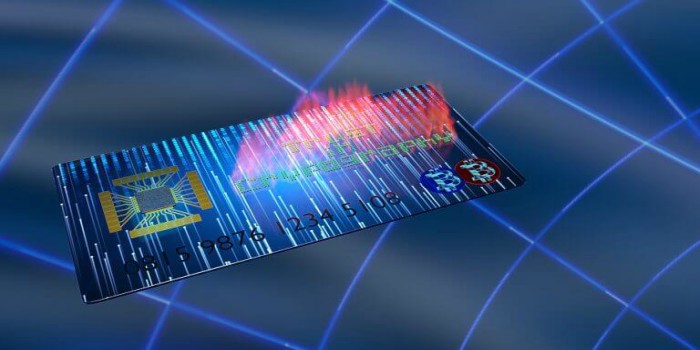
The next few years will see dramatic changes to the way we use money, transact, transfer value, bank and insure ourselves and our businesses. These changes are driven by Financial Technologies (FinTech) but will affect every business in the world. As the world changes, money changes.
Throughout history, our use of money has evolved, from barter to coins, from banknotes to credit cards. Each of these changes in money coincided with a significant shift in the economy and world history. We’re seeing such a shift again as we head into the digital age.
Getting started
There are two main Digital Money platforms gaining traction today. Ethereum with its associated cryptocurrency called Ether, and Blockchain with its associated currency called Bitcoin.
Bitcoin has moved into common language as a generic term for all cryptocurrencies (much like Google has become the synonym for Internet search regardless of the engine used) – but, there are many types of cryptocurrencies out there.
There are two main ways to invest in digital money, both with a few granular levels below them.
For both of these options you will need to download and activate a digital wallet. This will allow you to save and sell the coin you own. Most of the best wallets have facilities that will enable you to get a debit card linked to the wallet. This debit card will enable you to transact in the ‘real’ world using your coin at whatever the relevant exchange rate is at the moment of payment.
- Mine coin
- Buy coin

Mining Bitcoin
There are three common ways to do this.
- Buy your own machine which you physically keep
- Buy a machine that is hosted on your behalf in a server farm mine
- Buy a portion of processing power in a server farm mine without owning an actual device.
Options 2 and 3 are different forms of what is called Cloud Mining.
Option 1 – Buy your own machine
The safest and simplest way to mine Bitcoin, but also the most expensive and least profitable. You have the actual device so the only real risk is if your wallet is hacked or if your device is stolen.
You can buy mining hardware by going onto Amazon and ordering it – it is that simple.
Different performance parameters in the machines influence the price – those able to process more data and earn coin quicker are more expensive than slower ones. You can even buy a USB stick that will use your desktop or laptop to mine for you.
There are two catches here – mainly linked to energy consumption.
Catch 1 – Every 4 years it becomes exponentially more difficult to mine coin so the lower the specification of your machine the less possible it becomes to mine coin profitably.
Catch 2 – The cost of energy (and the heat and noise related to having a machine run 24/7) makes it less likely that you are going to be able to generate coin cheaper than the energy needed to run the machine doing the mining.
These two catches are directly connected to the value of coin, so it may be a losing equation today, but a highly profitable one tomorrow. This option is most affected by the fluctuations in coin value relative to energy cost.
Option 2 – Buy a machine hosted in a server farm
The intermediate option with regards to risk.
You own the actual device so you are able to log in remotely and track its progress and issue any instructions related to the coin you mine. But, it is not hosted in your physical presence and the risk of the hosts of the server farm mine absconding with your device is real.
Most of the server farms are physically hosted in cold climates like Alaska, Canada, Russia, or Northern Europe. They are also placed in environments where there is access to uninterrupted energy that is cheap. Both of these reasons is why there are few legitimate mines physically hosted on the African continent or the Asian sub-continent.
Option 3 – Rent processing power from a server farm
This is the cheapest way to mine coin as you don’t need to outlay any actual capital purchasing hardware. The hardware is owned by the host and you buy/rent processing power. When the rental expires you gain the coin earned while you “managed” the device but nothing else. Should you wish to earn more coin you need to rent more space.
The cost-effectiveness of this model is based on its fractional basis. In some cases, it is possible to even “sub-let” processing power with a number of others and to split the generated coin proportionally.
Most of the hosts will levy an administrative/hosting/leasing fee which will impact your profitability but is understandable at this budget/entry level where no hardware costs are incurred by you.
Cloud Mining Warning
There have been instances of websites being set up positioning themselves are cloud mining sites, but where they have run a little more like Ponzi schemes with no evidence that they ever actually mined coin.
At the beginning, people get paid out – generally from the fees paid by others…. providing an air of legitimacy. Then overnight the site goes dark, payments stop, and another site pops up looking eerily similar.
If you are going to rent space on any device that you cannot log into and access yourself (and even if this is the case but the device isn’t in your physical custody) make sure to do research beforehand to ensure the space is legitimate.
One of the awesome things about coin mining is that the returns are stable able to significantly outstrip traditional investment returns… so, don’t dismiss high returns – just make sure to benchmark them against the appropriate and relevant peers, not traditional investments.
Buying coin
If you just want to have cryptocurrencies as part of a diversified portfolio then it is probably not worthwhile going through the process of mining your own coin. In fact, mining will probably work against this objective as it will not allow sufficient diversification options, as you will be locked into one or two options.
There are several exchanges that will allow you to buy coin with real-world cash. It is on these exchanges where the miners move their coin and where the value of the coin is established. The value fluctuates as much as it does because it is driven by a 100% supply-demand dynamic.
If you want to just own coin then you are able to manage your risk profile here, in much the same way that you manage any other commodity, equity, or asset you may own.
For example – Ether has a significantly lower price than Bitcoin, but Ethereum as the underlying infrastructure that supports it has more users than Blockchain. But Blockchain has more large corporate entities looking at using it, where Ethereum is a platform that is populated by many smaller more entrepreneurial entities…
Then there is Billion coin, and other cryptocurrencies (and even one or two developing nations who have created a hybrid Digital currency that exists alongside their fiat currency, but which is not technically a cryptocurrency because it is tied to their local economy). Basically, the purchase and owning of cryptocurrencies as an asset class needs the same due diligence as any other investment within a diversified portfolio.
Of all of the options listed above purchasing coin has the lowest barrier to entry from a cost perspective, is the easiest from a risk management perspective, but potentially the least profitable (although there may be times when owning your own hardware onsite, or using your own PC to mine will be less profitable).
Network Marketing Model
The final way of getting into digital finance is via network marketing platforms. These may look and feel like pyramid schemes – and some of them are – but in many cases, these are vehicles that allow an individual to benefit from the investment and interest of others they are able to recruit.
These structures often generate two revenue streams for individuals. One stream is linked to the growth of the underlying currency asset and mining activity. The second revenue stream is more immediate and is linked to benefitting from the recruitment of others into the structure/company.
The network marketing model allows the individuals to effectively participate in a model where they are purchasing processing power rather than actual machines. But the fractional purchase is of a farm of machines that are the property of the actual company/network to which they belong rather than an unknown and anonymous website owner.
There are only certain types of individuals who resonate with this type of structure, and it should be entered into with open eyes, as members will be expected to recruit others into the company to enable it to buy more hardware and grow and expand over time. If you are going to get involved in this model it is about more than just mining, or buying coin, it is also about growing and building the company/network.
TomorrowToday Global is not a financial services company and we are not licensed to give financial advice so we cannot recommend any particular platforms, currencies, or processes.
This cheat sheet is a review of the options if you wish to get into the lucrative world of digital finance. Should you wish to get involved we have two simple pieces of advice.
- Use the internet to search for relevant and detailed information before you spend any money. DO YOUR RESEARCH.
- Contact your licensed financial advisor for their input and advice…. if they aren’t able to engage with you and speak knowledgeably about this area and how it integrates with the rest of your financial planning let them know that their ignorance is unacceptable and you expect them to get up to speed ASAP…. alternatively, change to a financial advisor who is able to assist you in managing your finances in the digital age.

